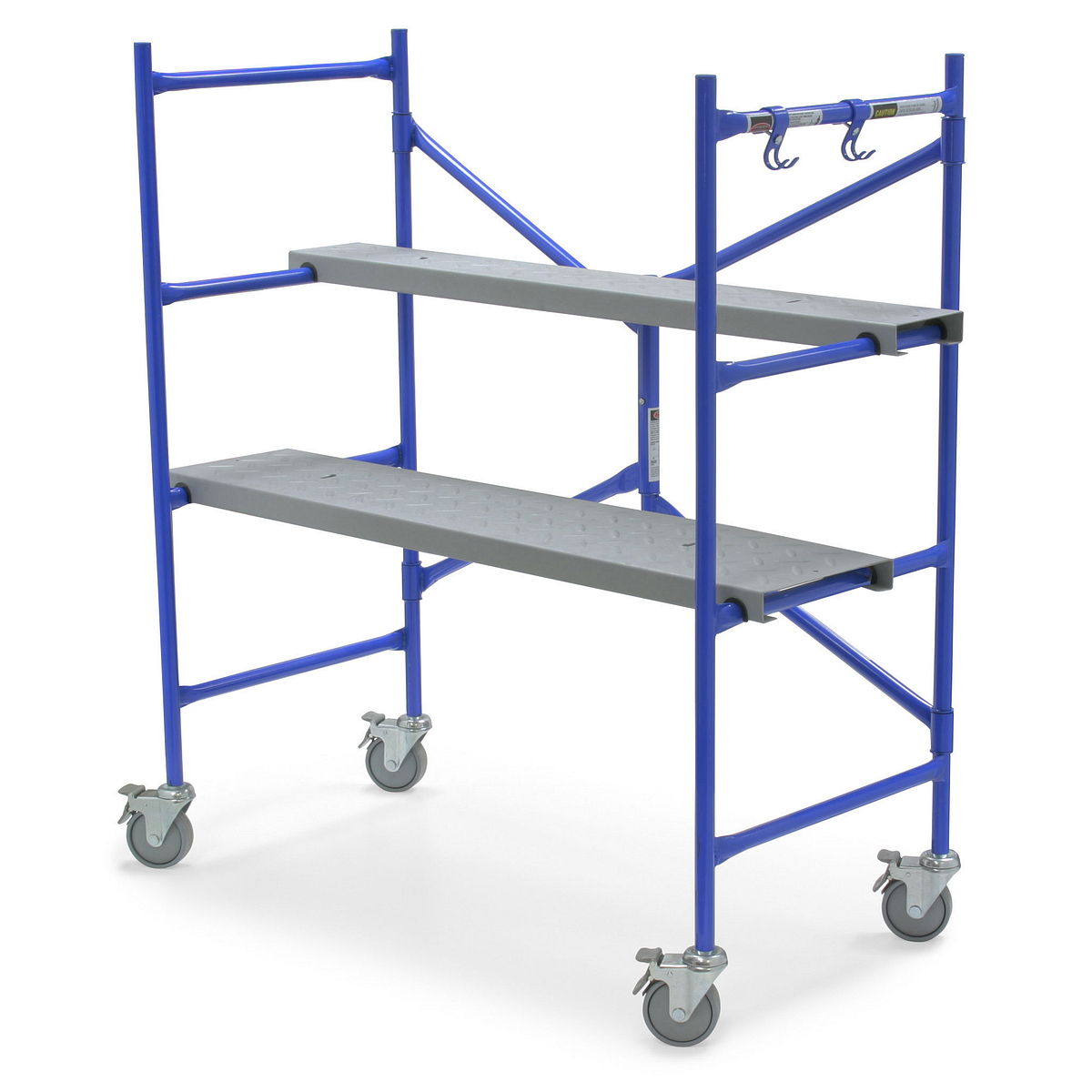Checking Out the Numerous Kinds of Scaffolding Utilized in Building Projects
The building and construction market relies greatly on various sorts of scaffolding to fulfill details task requirements, each offering distinct benefits and applications. Traditional frame scaffolding provides a tough foundation for general tasks, while put on hold scaffolding is vital for work on skyscraper structures. Various other options, such as system and rolling scaffolding, accommodate effectiveness and flexibility, specifically. Moreover, the cantilever alternative shows important in metropolitan settings where room is constricted. Comprehending the subtleties of these scaffolding kinds is vital for maximizing security and performance on building and construction websites, triggering a closer assessment of their one-of-a-kind attributes and applications.

Typical Structure Scaffolding
Traditional frame scaffolding is among one of the most widely utilized methods in the construction market because of its effectiveness and versatility. This system contains straight and vertical frames that are constructed to produce a stable platform for employees and materials. The major parts consist of upright blog posts, straight journals, and angled dental braces, which together offer a strong framework that can support considerable lots.
Among the crucial advantages of traditional structure scaffolding is its adaptability to numerous building and construction tasks, ranging from residential buildings to big commercial structures. The modular design allows for easy setting up and disassembly, making it effective for both short-term and lasting projects. In addition, the system can be customized in height and size, accommodating different structure designs and site conditions.
Security is paramount in scaffolding applications, and traditional frame systems are outfitted with guardrails and toe boards to avoid falls and guarantee worker defense. Regular examinations and adherence to safety and security policies are critical in maintaining the stability of the scaffold (Scaffolding). Generally, traditional frame scaffolding continues to be a fundamental selection in the building market, supplying a reliable platform for labor and enhancing overall project effectiveness

Suspended Scaffolding
Put on hold scaffolding uses an one-of-a-kind option for building jobs that need access to elevated surfaces, particularly in circumstances where typical frame scaffolding might be not practical. This type of scaffolding is usually put on hold from the roof covering or upper degrees of a structure, making use of a system of systems, wheels, and ropes to create a working area that can be gotten used to different elevations.
One of the main benefits of put on hold scaffolding is its versatility. It can be easily rearranged or lowered to suit modifications in construction demands, making it optimal for tasks such as home window setup, frontage work, and maintenance on skyscrapers. Furthermore, the marginal impact of suspended scaffolding enables much better use of ground space in city settings, where room is commonly limited.
Safety and security is a critical consideration in using suspended scaffolding. Appropriate rigging and securing systems have to be employed to ensure stability and avoid crashes. Operators has to also be trained in the risk-free usage of this tools. In general, suspended scaffolding gives a efficient and reliable solution for accessing hard-to-reach areas in numerous building and construction situations, boosting both efficiency and security on website.
System Scaffolding
System scaffolding, commonly considered a modern remedy in the scaffolding market, consists of pre-engineered parts that can be swiftly set up and adapted for numerous building and construction tasks. Scaffolding. This sort of scaffolding is characterized by its modular style, which enables adaptability and efficiency on work websites, suiting different heights and Read Full Article architectural requirements
Commonly made from high-strength steel or aluminum, system scaffolding supplies enhanced resilience and security. The components consist of vertical posts, horizontal ledgers, and angled braces, which adjoin securely, ensuring a durable framework. The style commonly incorporates standard installations, simplifying setting up and disassembly processes, consequently lowering labor time and prices.

Rolling Scaffolding
Rolling scaffolding is a functional option to conventional set scaffolding, developed for flexibility and simplicity of usage on building and construction websites. This kind of scaffolding includes a platform sustained by frameworks with wheels, permitting workers to easily move it as required. The movement attribute significantly boosts productivity, as it lessens downtime associated with disassembling and putting together dealt with scaffolding.
Typically created from light-weight materials such as light weight aluminum or steel, rolling scaffolding offers a tough yet portable option for jobs requiring frequent repositioning - Scaffolding. It is especially helpful in jobs such as painting, drywall setup, and electrical job, where accessibility to various heights and places is required
Security is extremely important in rolling scaffolding design, with attributes such as locking wheels to avoid unexpected motion when in operation, and guardrails to safeguard workers from drops. Furthermore, numerous designs are adjustable in elevation, fitting various task demands.
Cantilever Scaffolding

The layout of cantilever scaffolding normally entails making use of arms or brackets anchored to a building or structure, allowing the platform to prolong exterior securely. Safety is critical; therefore, these scaffolds have to be engineered to stand up to different tons and environmental problems. Regular assessment and site link maintenance are vital to guarantee architectural you can try these out integrity and worker safety and security.
Cantilever scaffolding is favored for its convenience and efficient use area, making it a popular selection in urban atmospheres where room constraints prevail. Moreover, it helps with less complicated access to high elevations, eventually adding to the general performance of building tasks. Similar to all scaffolding kinds, proper training and adherence to security standards are important for workers making use of cantilever scaffolding.
Verdict
Standard structure scaffolding gives security, while suspended scaffolding provides convenience for raised tasks. System scaffolding promotes quick setting up, and rolling scaffolding improves flexibility for differing work environments.
Traditional structure scaffolding supplies a strong foundation for basic jobs, while put on hold scaffolding is vital for job on high-rise frameworks.Moving scaffolding is a flexible alternative to traditional fixed scaffolding, designed for wheelchair and simplicity of use on building sites. As with all scaffolding kinds, appropriate training and adherence to safety requirements are crucial for employees making use of cantilever scaffolding.
Conventional structure scaffolding provides stability, while suspended scaffolding uses flexibility for raised tasks. System scaffolding helps with fast assembly, and rolling scaffolding improves flexibility for differing job atmospheres.
Comments on “Professional Scaffolder Surrey: Your Trusted Partner for Safe Installations”